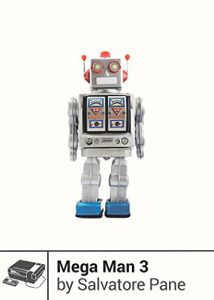Capcom's Keiji Inafune followed the unexpected success of Mega Man 2 with a "kitchen sink" sequel that included eight new robot masters, a canine companion, a mysterious new frenemy, and a melancholy tone that runs through the game from its soft opening notes. Mega Man 3 was the biggest, messiest, and most ambitious Mega Man game yet.
But why do we hunger for twitchy, difficult platformers like Mega Man 3 decades later when the developers, the franchise, and the Blue Bomber himself have all moved on? Investigating the development of the Mega Man series alongside the rise of video game emulation, the YouTube retrogaming scene, and the soaring price of NES carts, novelist Salvatore Pane takes a close and compelling look at the lost power-ups of our youth that we collect in our attempts to become complete again.
But why do we hunger for twitchy, difficult platformers like Mega Man 3 decades later when the developers, the franchise, and the Blue Bomber himself have all moved on? Investigating the development of the Mega Man series alongside the rise of video game emulation, the YouTube retrogaming scene, and the soaring price of NES carts, novelist Salvatore Pane takes a close and compelling look at the lost power-ups of our youth that we collect in our attempts to become complete again.



